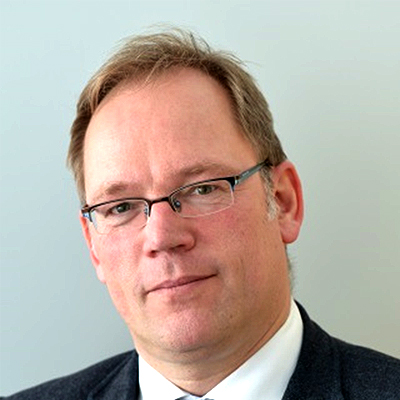
June 7th, 2021
Prof. Andreas Strohmayer, EASN Chairman and Professor for aircraft design at the Institute of Aircraft Design, University of Stuttgart (short CV here), shares his knowledge regarding the active involvement of the EASN Association in the below mentioned future European Partnerships.
Q1: The European Parliament has now approved Horizon Europe, Europe's key funding programme for research and innovation. This opens the way for the Commission to finally implement the work programme and also the preparation of the Private Public Partnerships comes to its final stage. What opportunities and challenges do you see for academia in this context?
It is of course a great step forward for the European research community that the first calls in the Horizon Europe Work Programme are about to be launched, and the latest draft documents circulated allow us to prepare for the fairly short deadline of the very first call. EASN has started a campaign within its member base, giving an opportunity to express one's interest in the different Call topics. On this basis EASN plans to establish co-operations with other stakeholders to facilitate the participation to promising and winning proposals.
Q2: In addition to the Commission's Work Programme, a number of Public Private Partnerships are under preparations. Which ones are of interest to the aerospace research community and what is EASN contributing to these future European Partnerships?
Our main focus in this preparatory phase has clearly been on CLUSTER 5: Climate, Energy & Mobility, where the preparation for a European Partnership for Clean Aviation (EPCA), the successor of Clean Sky 2, has been - and still is - a top priority for us. From the signature of a joint declaration of all stakeholders committing to the creation of EPCA in December 2018 until today, EASN has proactively contributed to this Partnership with enthusiasm, creativity, flexibility, collaborative spirit and reliability in the various bodies and working groups. Beyond EPCA, we also stretch out to other undertakings in this Cluster, such as the European Partnership on Clean Hydrogen and the European Partnership for Integrated Air Traffic Management (SESAR 3). Not to forget CLUSTER 4: Digital, Industry & Space, where EASN has actively participated in the proposal of a European Partnership Globally Competitive Space Systems. Our intention with all these different activities is to provide a broad range of research and cooperation opportunities to our members.
Q3: Going back to EPCA, what are the key elements of the research agenda and what challenges still lie ahead of us for a successful implementation?
The EPCA Strategic Research and Innovation Agenda (SRIA) has the mission to prepare grounds for a transition to sustainable, clean and competitive solutions for climate-neutral air transport as required by the European Green Deal. Three thrusts for disruptive technologies have been identified at the core of this agenda: a hybrid-electric regional aircraft, an ultra-efficient short and medium range aircraft, and enablers for hydrogen-powered aircraft. Out of the Horizon Europe programme budget of 95,5bEUR only about 1,7bEUR Union contribution will be dedicated to the realization of the EPCA targets. Given the bold vision developed in EPCA's SRIA for a series of ground and flight demonstrations in the different thrusts, this amount will be easily oversubscribed in the related proposals, making the budget to an important challenge for a successful implementation of the vision laid out in the SRIA.
Within the EASN Association, we will have to establish an even closer link to our members to be able to react quickly to the issues at hand in the Horizon Europe framework and to ensure a fruitful participation in the different programs. This will be a prerequisite for successful joint research efforts towards a more sustainable air transport system.